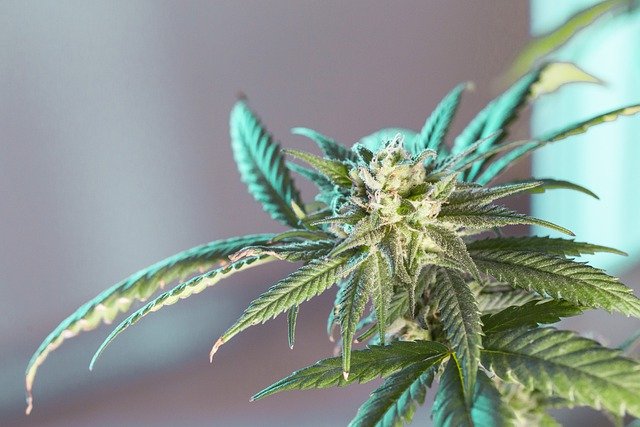
This story originally appeared on The Fresh Toast.
Despite more Americans supporting federal legalization of cannabis, many people still don’t know about the industry’s potential to harm the environment.
Just like other agricultural commodities, there are environmental impacts involved when growing cannabis. But many consumers don’t know, or simply don’t care how their cannabis was grown or even if it was sprayed with harmful chemical pesticides.
Tons of carbon is emitted into the atmosphere too just to grow a single cannabis plant. However, there is a growing number of people who do care how their cannabis was grown, and if they are produced with care to reduce its impact on the environment.
With climate change the number one issue our earth faces today, it’s important for you to help make a positive change by looking for products — your cannabis included — from brands or manufacturers that work to reduce their carbon footprint.
Cannabis is one of the oldest agricultural commodities out there, and more grow operations continue to sprout because of demand for the product. However, growing it using modern techniques especially in indoor grows requires massive amounts of energy and water, which have a major carbon footprint. Despite more Americans supporting federal legalization of cannabis, many people still don’t know about the industry’s potential to harm the environment.
That’s not to say that the industry as a whole has a fault, it’s just that awareness of sustainable growing techniques are still lesser known but there are many companies out there who have made it their mission to provide customers with sustainably-grown cannabis all while complying with local regulations.
And there’s a market for it: survey says that cannabis consumers are willing to shell out more money for clean and green products.
What Does Sustainable Cannabis Growing Involve?
It’s estimated that a grow house uses up around the same energy to produce a kilogram of cannabis flower as driving a vehicle across the United States as much as 7 times. That’s a LOT of energy. And it’s no secret that there already is a need for making energy more efficient for the industry.
Having said that, sustainable cannabis growing doesn’t just apply to big-name players and cannabis corporations, and doesn’t exclude the location of your grow whether it’s indoors or outdoors. Mom and pop setups and even cannabis startups can also do the same when it comes to their exhausts, grow lights, and fans. And no matter what the size of your grow op is, you can still have total control over the quality of nutrients you use on your plants, since many pesticides and packaged plant fertilizers are made with chemicals that are harmful to the environment.
Aside from reducing the impact of your grow on the environment, another major way that businesses can reduce their carbon footprint is by using more eco-friendly packaging options. This can be a challenge because some cannabis laws in certain states especially when it comes to edibles require them to be individually wrapped, which means that candies and other such items that contain CBD or THC need to be self-contained and have the proper labeling, while liquid medications should provide their own cups.
How To Find Sustainable Cannabis
Being informed means you’re one major step ahead. Educating yourself on the various types of products out there and learning to decipher among a massive amount of tempting cannabis variations will enable you to make an informed choice that will play a big role in reducing your impact on the environment, whether you consume for fun or whether you need it for medicine.
Sierra Club, a renowned authority on practices we ordinary people can do to help save the planet, released a list of helpful tips to help cannabis consumers become more green. Here’s what they say:
Look for labels: There are numerous third-party certifications available in the cannabis industry, which, albeit small, still give peace of mind that certain products have been given the green light on sustainability. Some that you can start looking for include Certified Kind,Cannabis Certification Council, and Dragonfly Earth Medicine. There are also additional certifications that go to products, verifying that they made an effort to reduce electric consumption to produce their goods.
Opt for sun-grown cannabis: Indoor cannabis operations are notorious for the vast amounts of energy they consume to grow pot. On the other hand, sun-grown cannabis makes use of resources that are already naturally available, like sunlight of course! This is an excellent alternative to indoor-made products that use artificial light on top of massive nutrients, fertilizers, pesticides, and temperature-controlled environments. Simply look for packages that indicate they are made with “sun-grown” practices.
Look for eco-friendly packaging: Once you start looking, you might be surprised to find that many cannabis products are packaged in a sustainable manner, such as with recycled or recyclable packaging.
Go for simpler products: The simpler to produce, the less energy was required from the environment. So if you have a choice between buying cannabis oils which required tons of processing as compared to raw cannabis flower in a glass jar, go for the flower.
Look for laboratory tests: There are cannabis products that come with testing results at the very least, or a Certificate of Analysis. These tests are required for being sold at dispensaries in legal states, so this should be a quick and easy step you can do. They test for harmful ingredients such as mold and heavy metals, meaning they aren’t just cleaner for the environment but safer for your health, too.
These are just some helpful tips to get you started on your path to becoming a more environmentally-conscious cannabis consumer. What are your favorite eco-friendly cannabis brands?
 Investment value finders Investment value finders
Investment value finders Investment value finders



